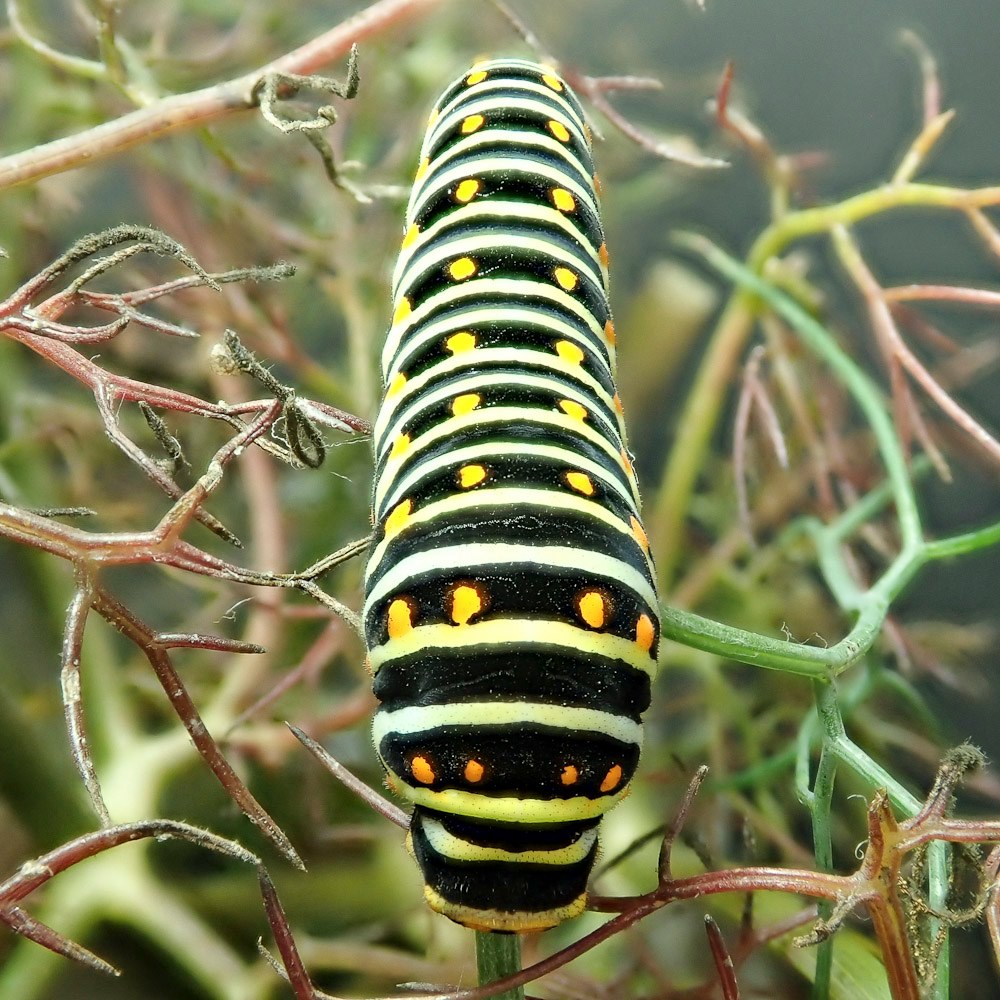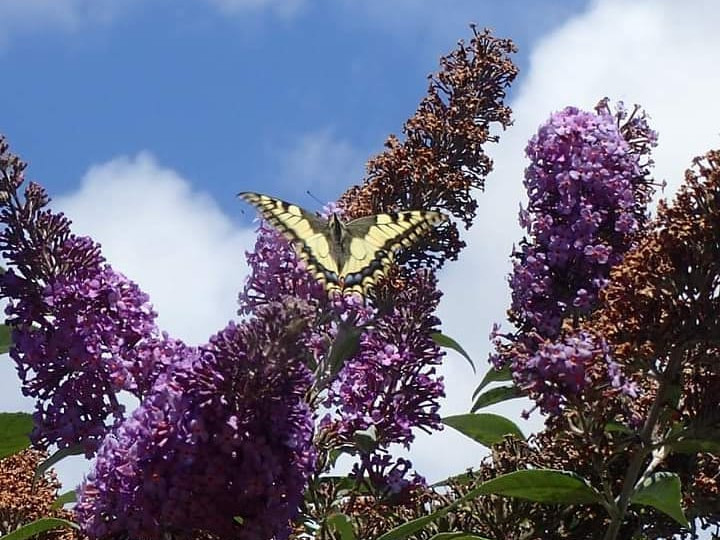The Swallowtail butterfly is a very rare native of Britain and only found in a few wetland sites in Norfolk where it feeds on milk parsley. In some years the continental sub-species does cross the channel. With recent hot weather and winds from the south there have been a few records this year along the south coast, but one was recently spotted at Rye Harbour Nature Reserve by warden Chris Bentley – the first recorded here.
Since then, I’ve been keeping an ongoing account of this continental Swallowtail butterfly and its offspring at Rye Harbour Nature Reserve.
3rd August – a Swallowtail butterfly was seen briefly by Chris Bentley on a buddleia bush in my garden next to the nature reserve. Despite a couple of hours of searching, we could not relocate it. However, my neighbour photographed it with her phone in the afternoon. On close examination of the photo that evening, it looked like she may have been egg laying. She said “I was honoured to see this beautiful butterfly in my garden and to photograph her laying her eggs… without realising it.”
4th August – early next day my neighbour and I searched the fennel and found seven eggs. These small fennel plants were due to be weeded, so we carefully saved the plants and put them in pots in an airy container in a light, but not sunny windowsill. The yellow eggs were just 1mm diameter. I doubted whether they would hatch, because it would need the butterfly to have successfully mated in France before it launched out across the sea.
7th August – the eggs started turning brown, they were either developing, or rotting.

9th August – overnight the eggs had hatched into 2mm long black and spiky caterpillars and there were now nine!
10th August – caterpillars that hatched had already grown to just over 4mm long and are feeding greedily on the fennel plants. We offered them wild carrot, but they only fed on the fennel plants that their egg was laid on to and they wandered very little.
12th August – the largest caterpillar 9mm long, had moulted and had orange spots.
13th August – the largest caterpillar had moulted again overnight, it was now more colourful and with white “feet”.
15th August – the seven day caterpillars go through periods of rest and then frantic eating of the leaves and stalks of fennel. They were about 12mm long.
18th August – The largest of the nine caterpillars is 19mm long and becoming more colourful with every moult.
19th August – Chrissy Reidy from BBC Southeast News came to see and report on the Swallowtail story.
20th August – as they get larger they are tackling the thicker stems of the fennel.
22nd August – in just two weeks the Swallowtails have gone from 1mm eggs to 35mm long multi-coloured fennel eating machines – nature is amazing if you take the time to observe it closely.
This is the story so far, but for regular updates on the Swallowtail story, including videos and photos, see here.
Image Credits: Chris Bentley , Barry Yates .



